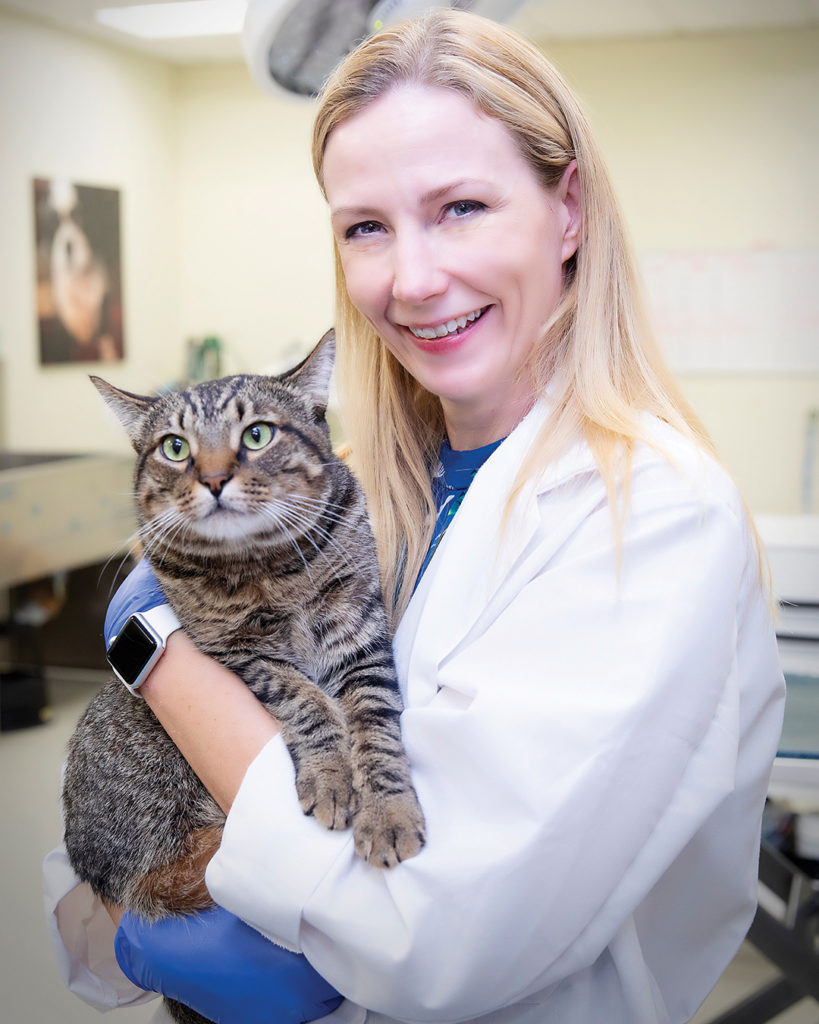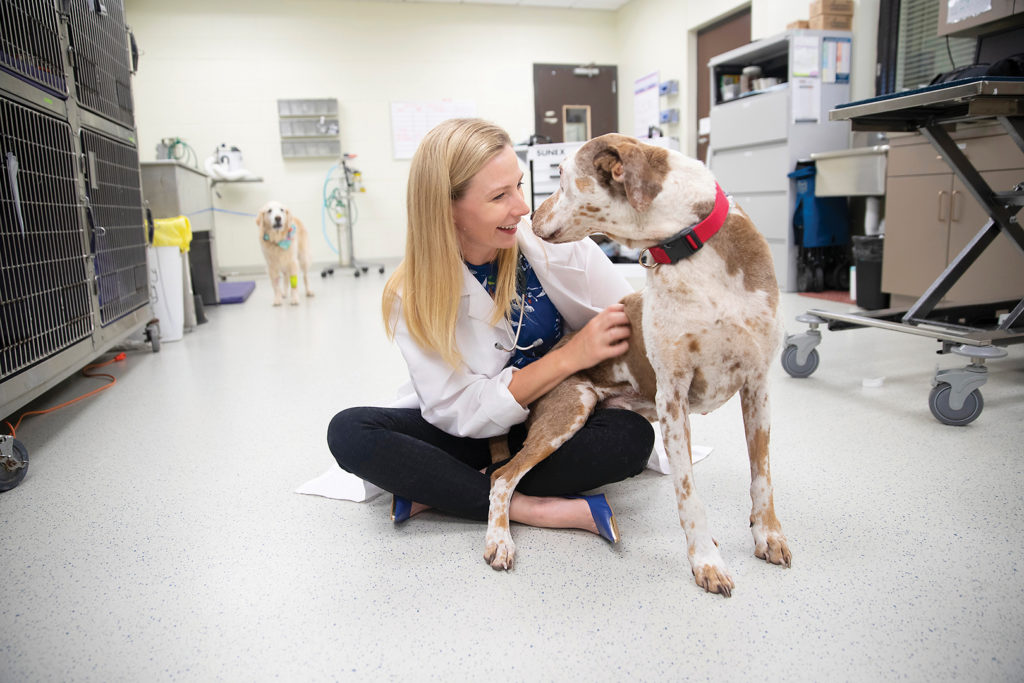Clinical Trials: Oncology
In addition to leading the clinical trials core, Dr. Heather-Wilson Robles’ trials work to fine tune pharmaceuticals that could eventually be used in human cancers, as well as screening tests that could help veterinarians better diagnose cancers.

Of the seven clinical trials currently underway in the Small Animal Hospital’s (SAH) oncology service, associate professor Dr. Heather Wilson-Robles has her hands in “four or five.”
The University of Tennessee veterinary graduate whose research focuses on pediatric bone cancer has been personally touched by the devastating disease, in both her family and her pets, and those experiences have informed her work.
“Some of my clinical trials are comparative in that they’re meant to help humans, and some are not, in that they’re meant to help only animals,” she said. “Oncology is prime to do those things because it is so translational.”
About half of all dogs and a third of all cats over the age of 10 get cancer. Translationally, and perhaps ironically, while elderly dogs tend to get cancer, they tend to get pediatric cancers.
Conversely, cats tend to get geriatric cancers, but their cancers—with the exception of feline tumors in the neck and head—generally aren’t as translatable.
That hasn’t stopped Wilson-Robles from being one of the few SAH clinicians to offer a clinical trial for cats, however.
In one of two joint lymphoma studies with colleague Dr. Michael Deveau—the only joint veterinary radiation oncologist and medical physicist in the country—Wilson-Robles is investigating the use of low-dose abdominal radiation for the treatment of feline small cell gastrointestinal lymphoma. The project stems from the idea that cats loathe visiting the veterinarian as much as they loathe being medicated using pills.
“If we do radiation and that holds them in remission for eight months, they’re not having to get pills and they’re not having to go to the vet clinic as often,” she said. “All of a sudden, you have happier owners and happier cats. Even if the cat lives the same amount of time as they would on chemotherapy, it’s still a better quality of life, and potentially cost effective.”
In the other, the pair is investigating whole lung irradiation for dogs with osteosarcoma, a type of cancer that produces immature bone.
“Doctors used to do whole lung irradiation on children before chemotherapy existed for tumors that arise from the bone; they quit because of the long-term damage the radiation would cause to the lungs in these children and then chemotherapy became the best treatment,” she said. “But our dogs are often geriatric. They’re not going to have the long-term side effects that happen many years later. They’re still dying of this disease, so we are investigating how well whole lung irradiation, along with chemotherapy, may improve outcomes for these dogs.”
In another of her oncology clinical trials, Wilson-Robles is working with the Texas A&M chemistry department to test an older drug previously used in humans for its effect on canine lymphoma.

“This drug was used for decades to treat tuberculosis in people, and researchers found that it actually enhances the sensitivity of cancer cells to chemotherapy or radiation therapy,” she said. “We are using it right now in lymphoma. Our hope is to use it in a much broader variety of things, the thought being if we use this drug in conjunction with our standard of care, do we improve outcomes by making them more sensitive to the drugs at hand?
“Hopefully, it will lead to a veterinary product and will be translatable,” she said. “Preliminary data from our collaborators showed that it makes breast cancer and prostate cancer cell lines more susceptible to radiation and chemotherapy, so our hope is that by demonstrating this in an actual spontaneous cancer model, things will move forward on the human side, as well.”
On the diagnostics side, Wilson-Robles is working to develop a screening test that will help veterinarians better determine if an animal has cancer or inflammation, or neither condition.
“First we need to have a general idea of what to look for with each condition, so we’re simply collecting blood from healthy animals, those with cancer, and those with inflammation,” she said. “It’s not the be-all, end-all, but it would help us figure out which way to go when we come to that fork in the road during treatment.”
The next step is creating tests for specific cancers.
While Wilson-Robles’s oncology clinical trials span different forms of treatment, they all share the same goal.
“The biggest thing is that we hope to make things better. We get sick of losing patients, of seeing that 3-year-old dog that we know is probably going to die a year from now from a cancer that has caused so many other deaths,” she said. “We realize there may never be a cure-all for cancer. Maybe instead of completely obliterating cancer, we can turn it into a chronic disease.
“If there are things we can do to at least help push cancer research along a little bit so that we all get better at treating it, we’d all like to be a part of that in some way.”
###
Note: This story originally appeared in the Fall 2019 edition of CVMBS Today.
For more information about the Texas A&M College of Veterinary Medicine & Biomedical Sciences, please visit our website at vetmed.tamu.edu or join us on Facebook, Instagram, and Twitter.
Contact Information: Jennifer Gauntt, Director of CVMBS Communications, Texas A&M College of Veterinary Medicine & Biomedical Sciences; jgauntt@cvm.tamu.edu; 979-862-4216



